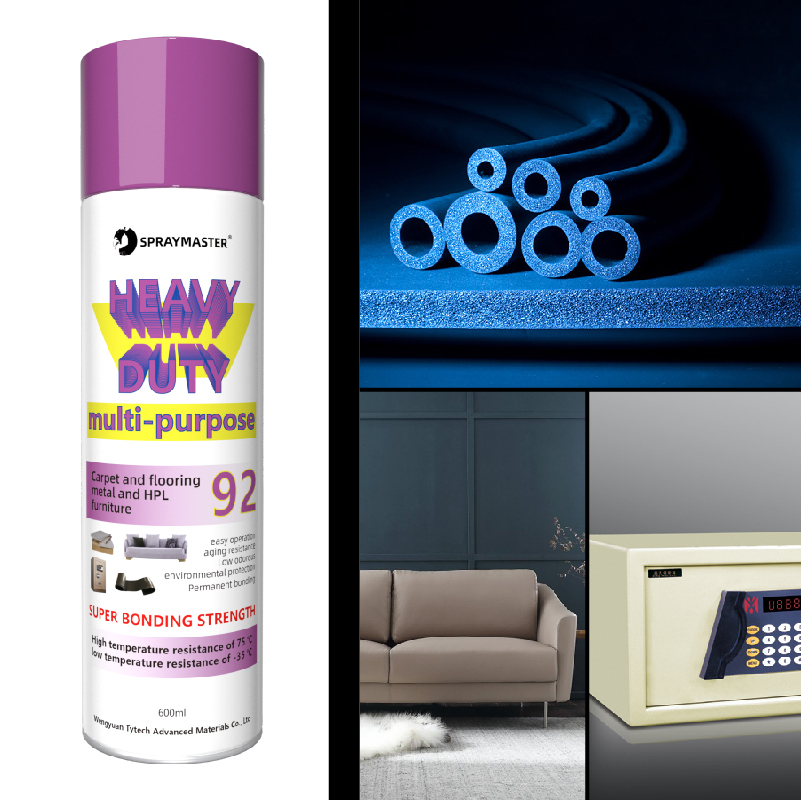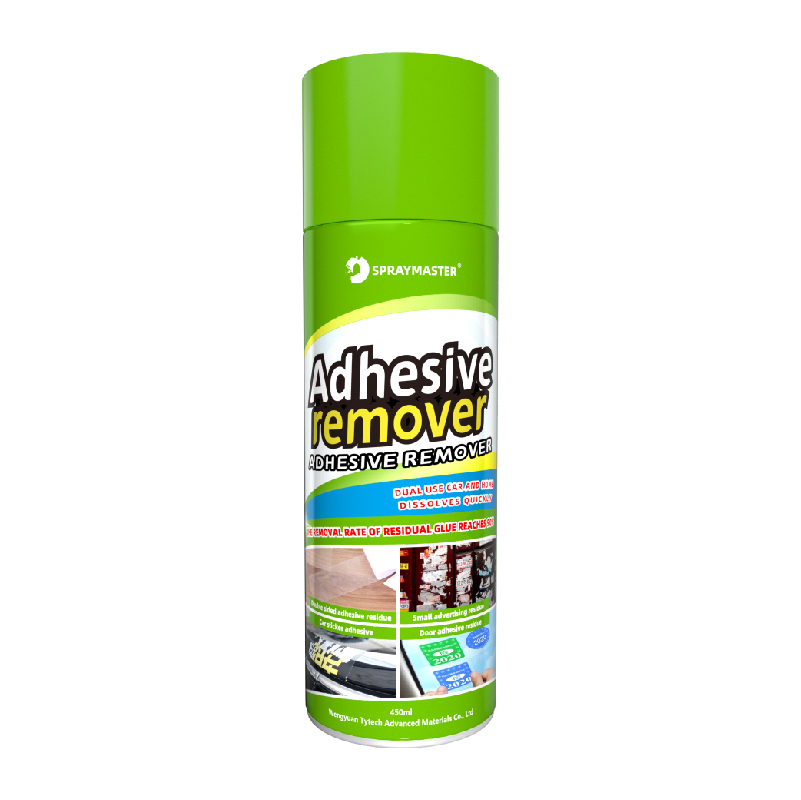Types of Spray Adhesives and Their Applications
These magical glues, housed in cans of wonder, have the power to bond practically anything together. Today, we will immerse ourselves in the diverse types of spray adhesives and their incredible applications. Brace yourselves for an adventure of creativity and innovation.
These magical glues, housed in cans of wonder, have the power to bond practically anything together. Today, we will immerse ourselves in the diverse types of spray adhesives and their incredible applications. Brace yourselves for an adventure of creativity and innovation.

Aerosol Adhesives:
Picture a can that unleashes glue like a superhero’s web, drying at lightning speed to create an unbreakable bond. That’s the magic of aerosol adhesives. With their super-fast drying time, they are ideal for sticking paper, fabric, or even lightweight materials such as foam. Available in various strengths, you can choose between temporary bonding or a more permanent solution.

Contact Adhesives:
When you require Herculean strength and unrivaled durability, contact adhesives come to your rescue. These sprays must be applied to both surfaces you wish to bond. After a brief drying period, press the two surfaces together and witness the birth of an instant bond. Contact adhesives are perfect for laminating countertops or adhering heavy materials like rubber or leather.
Multipurpose Adhesives:
If versatility is what you seek, look no further than multipurpose adhesives. They are your trusty companions for all types of materials: wood, metal, plastic, fabric, and even paper. Tailor your project by choosing between temporary bonding or a permanent sealant.

Specialty Adhesives:
Certain projects demand specialized solutions. Enter specialty adhesives. For instance, photo-safe spray adhesives are a godsend when preserving precious memories without damage. Working with foam materials? Fear not. There are sprays designed specifically for bonding upholstery and insulation materials.

Temporary Bonding Adhesive:
Imagine crafting a masterpiece, rearranging the elements until perfection strikes. Temporary adhesives are your saviors in such moments. These sprays allow for effortless repositioning or removal without leaving any sticky residue behind. Whether you’re a passionate crafter or simply planning your project, temporary adhesives are your best friends.
Temporary Bonding and Repositionable Applications
Today, we embark on a thrilling journey through the realm of temporary bonding and repositionable applications. Get ready to revolutionize your projects as we explore the endless possibilities these adhesive wonders offer.

Advantages of Spray Adhesives for Temporary Bonding:
- Instant Bonding: Spray adhesives work their magic with quick-drying power. They create an immediate bond between surfaces, eliminating any precious time wasted waiting for glue to dry. Your projects can move forward without delay.
- Easy Repositioning: Mistakes happen, but with spray adhesives, they’re easily fixable. Unlike permanent adhesives, these wonders provide a temporary bond that allows you to peel surfaces apart and readjust without damaging materials. Say goodbye to irreversible mishaps.
- Flawless Precision: For projects demanding precision and alignment, spray adhesives are your secret weapon. They allow you to position materials with exactness, ensuring flawless results every time.
Advantages of Spray Adhesives for Repositionable Applications:
- Endless Repositionings: Imagine having the freedom to reposition items over and over again without losing adhesive power. Spray adhesives designed for repositionable applications possess a tacky consistency that adheres well to various surfaces while facilitating easy removal and reapplication.
- Residue-Free Removal: The beauty of spray adhesives lies in their clean removal process. Whether you’re rearranging wall decals or stickers, these magical sprays ensure residue-free removal, leaving surfaces spotless and ready for your next creative endeavor.
- Tailored Stickiness: It’s essential to know that not all spray adhesives are created equal. Some dry completely, losing their adhesive properties over time, while others maintain a slight tackiness even after drying. To find the perfect adhesive for your needs, read instructions and product specifications carefully.
Spray adhesives are the creative wizard’s best friend when it comes to temporary bonding and repositionable applications. Their instant bonding, easy repositioning, and residue-free removal make them invaluable tools for any project.
Remember to choose the right adhesive by understanding their characteristics and intended uses. Now that you’re armed with this knowledge, it’s time to let spray adhesives work their magical wonders and take your projects to new heights.
Choosing the Right Type of Spray Adhesive for Your Project
Spray adhesives are here to save the day. But wait, before you rush out and grab the first can of adhesive you see, there are a few key factors you should consider to ensure you choose the right type of spray adhesive for your project. So buckle up and get ready for some adhesive enlightenment.
First on our list is bonding strength. Different projects require different levels of adhesion. If you’re working on a heavy-duty project that needs to withstand extreme conditions, you’ll want an adhesive with a strong bond. On the other hand, if you’re working on something temporary or need to reposition your materials, a less sticky adhesive may be more suitable.
Next, consider the materials you’ll be working with. Adhesives aren’t one-size-fits-all, so it’s important to choose one that is compatible with the materials you’re using. For example, if you’re working with fabric, look for an adhesive specifically designed for textiles. If you’re working with wood or plastic, make sure your adhesive is formulated for those materials.
Now let’s talk about application method. Spray adhesives come in various forms – aerosol cans, pump bottles, or trigger sprayers. The application method can affect how evenly and precisely the adhesive is sprayed onto the surface. Consider the size of your project and the level of control you need when choosing an application method.
Don’t forget about any specific requirements or restrictions of your project. If you’re working in an enclosed space, choose an adhesive with low VOC content to minimize fumes. If you have a tight deadline or need to handle the bonded materials shortly after application, opt for an adhesive with a quick drying time.
Cleaning Residue Left Behind by Spray Adhesive
Let’s dive in and banish that residue once and for all.
- Determine the Surface: The first step is to identify the type of surface you’re dealing with. Different surfaces may require different cleaning methods to avoid damage.
- Non-Porous Surfaces: For glass, metal, or plastic surfaces, a solvent is your best friend. Try using adhesive remover. Apply the solvent to a clean cloth or sponge and gently rub the residue until it loosens. Repeat this process if necessary until it’s completely gone.

- Porous Surfaces: If you’re tackling fabric or wood, start by scraping off as much dried adhesive as possible using a plastic scraper or dull knife. Be gentle to avoid scratching the surface. Next, mix a small amount of liquid dish soap with warm water and apply it to a clean cloth or sponge. Gently dab at the remaining residue, rinsing the cloth frequently. Avoid vigorous rubbing to prevent spreading the adhesive further.
Remember to test any cleaning method on a small, inconspicuous area first to ensure it doesn’t cause damage.
- Final Touches: Once the adhesive residue is removed, clean the surface with mild soap and water to remove any remaining cleaning solution.
- Pro tip: Prevention is key. Follow the manufacturer’s instructions on drying times and application techniques. Allowing the adhesive to fully dry before contact with other objects will minimize residue.
Conclusion
Spray adhesive, the versatile wonder of the crafting world, offers a swift and mighty bond for all your project needs. But does it dry or stay sticky? Fear not, for most spray adhesives do indeed dry completely, transforming from a clingy state to a solid and non-tacky one. However, keep in mind that drying times can vary depending on factors such as temperature, humidity, material type, and adhesive formulation.
There’s a plethora of spray adhesives out there to cater to every whim. Some dry completely without leaving any trace behind, perfect for those permanent fixes in automotive repairs or construction endeavors. Others are intentionally designed to retain a hint of stickiness even after drying, offering flexibility and repositionability for your artistic exploits or temporary bonding needs.
To achieve optimal results with spray adhesive, heed the manufacturer’s instructions like they’re golden rules. Proper application technique, selecting the right adhesive for your specific project, and considering environmental conditions can greatly impact the drying process.
If you find yourself stuck with a persistently sticky spray adhesive after it’s supposed to be dry, it may be time to explore alternative solutions or try different types of adhesives that better align with your desires. Remember: understanding the characteristics and drying properties of spray adhesive is key to unlocking successful bonding in your projects.
